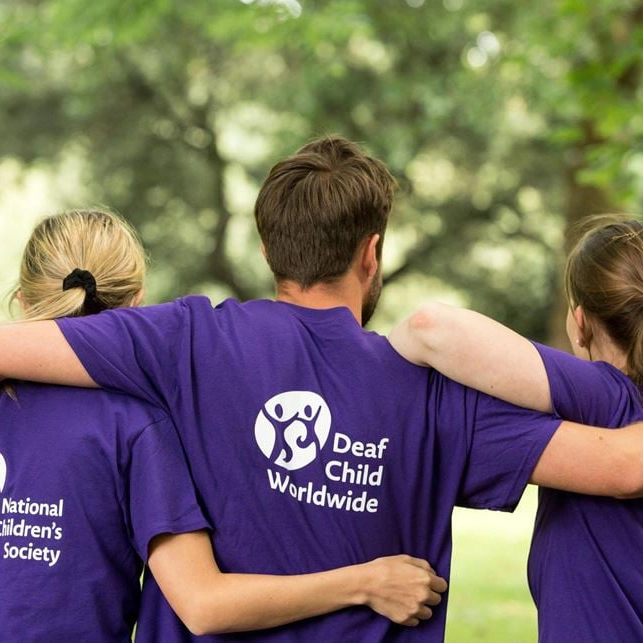National Deaf Children’s Society (NDCS) is the UK’s leading charity for deaf children and young people. They give expert support on childhood deafness, raise awareness and campaign for deaf children’s rights, so they have the same opportunities as everyone else.
The charity wanted to develop a chatbot that would give their web users rapid access to relevant and reliable information, as well as showcase the value of becoming a member of NDCS. The main audience would be parents, carers and family members of deaf children and young people (up to the age of 25), however, they wanted to include relevant information for young people, professionals and their supporters too.
We were selected by NDCS to help design and deliver a chatbot that could recommend relevant topics to different user groups, provide information and answers to FAQs and where necessary, allow users to book a follow-up interaction from the relevant NDCS department via email.
Implementation
We started by identifying the key use cases and designing the interactions users would have with the chatbot. We reviewed the website analytics and customer service queries to identify the most popular topics. We used Google Cloud’s Dialogflow for Natural Language Processing to allow the chatbot to answer free text queries and we also created guided conversation flows that would help users easily navigate the information available to them via buttons. We built flows that collect key information from the user, such as the child’s age or the child’s school year so the chatbot can respond with information specific to that user and the child’s situation. By building these flows within our platform EBM, the chatbot can remember and use this information later in the conversation to prevent users from being asked the same question more than once but also to personalise the chatbot’s responses.
We designed a welcome message that set the user’s expectations of the service, making it clear this was a chatbot, not a human and that the responses had been tailored to our main audience (parents). That said, as the chatbot is available to any individual on the NDCS website, we wanted to make sure that we understood who is interacting with the chatbot and try to recommend information that is most relevant to them. Therefore, the chatbot asks the user upfront to select who they are from four key user groups; parent, carer or family member, professional, young person or other (a supporter or potential supporter). The chatbot returns a different introduction message based on each user group, outlining how the chatbot can help them and suggesting topics that are most relevant to them. Also by knowing the types of users interacting with the chatbot from the start, NDCS will have more visibility of the types of queries each type of user is asking and therefore understand what is important to those users.
We wanted the chatbot to highlight the benefits of becoming a member, without this becoming too relative or impacting users getting the information they want from the chatbot. Therefore, the chatbot tracks how many times membership is mentioned within a conversation and only if membership has not been mentioned already, will it tell the user about membership benefits at the end of their conversation. The chatbot can not only track, but also personalises these membership benefits based on the types of questions a user has asked during their conversation. For example, if the user has asked about assistive technology, the chatbot highlights that by becoming a member you can try technology products for free, or if the user has asked about connecting with other families, the chatbot will tell users that by becoming a member you can have access to their free family events and so on.
In cases where the chatbot cannot answer a user’s query, either because the chatbot didn’t understand their question or we identified that the query should always be handled by a human, the chatbot sends the user to an email handover flow. The chatbot will ask for the user’s contact information and send an email with a copy of the user’s chat transcript to the most relevant NDCS team, asking the team to follow up with this user directly. For example, questions about donations will go to their fundraising team, questions about membership go to the membership team and so on. The user will also receive a confirmation email from the chatbot to reassure them that the chatbot has passed their query to the right team. To send these emails, the chatbot is integrated with a third-party email service called SendGrid, which is part of Twilio.
Before launching, we shared the chatbot with NDCS’ wider team and a small group of their members to gather user feedback on the chatbot. Those who signed up were asked to chat with Alex and complete a feedback form. We gathered feedback on the chatbot’s icon, tone of voice, helpfulness and functionality. For this testing phase, the chatbot asked for the user’s name and email at the start of their conversation so NDCS could follow up with them if necessary and to help the users we linked them to the feedback form at the end of their conversation. NDCS even interviewed a number of their test users over screen share and gathered real-time feedback on the chatbot while the user interacted with it. We iterated and continued to test the chatbot in response to user feedback. Overall the response from the test users was very positive, giving the NDCS team confidence to launch the chatbot on all pages of their public-facing website in October 2022.
Results
In the first month since launching, the chatbot has received more than 2,500 conversations and answered over 7,500 messages from web users. The chatbot was able to resolve 95% of users’ queries, with just 5% of users reporting that the chatbot did not resolve their query, and of these just 2% asked for an email follow-up from the NDCS team. With the chatbot, NDCS now has more visibility of their web users, the types of questions they ask and the information they are looking for, which can be fed into and help improve the charity’s Information and Support services.
The future
The NDCS team received full training on how to monitor and improve the chatbot via EBM, and have since taken full ownership of these tasks. They have continued to add more responses to the chatbot to widen its domain knowledge and they continue to learn more about their web users through the ways they interact with the chatbot.
Now that Conversational AI has been successfully introduced into the charity’s digital ecosystem and strategy, NDCS want to explore how the chatbot can support more services such as donations and explore surfacing the chatbot to more users via different channels.



